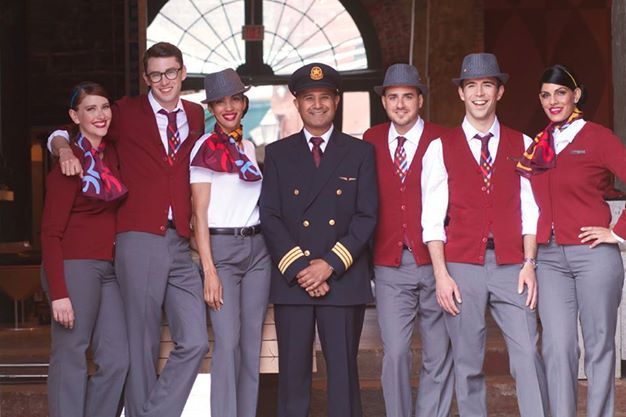MONTREAL – Air Canada says its low-cost Rouge subsidiary could eventually fly within Canada to take on low-cost competitors that are considering entering the vacation carrier market.
“There’s nothing preventing us from using Rouge in the domestic market and we will look at on a market-by-market basis,” CEO Calin Rovinescu said Thursday in a conference call to discuss the airline’s record second-quarter results.
The Montreal-based carrier reported the most profitable quarter in the airline’s history, crediting demand in all markets, Rouge and falling costs.
Air Canada’s net income grew to $223 million, or 75 cents per share for the period ended June 30. That compared to a loss of $23 million, or nine cents per share, a year ago.
It benefited from a $41-million tax gain, which partially offset higher fuel costs and the impact of lower foreign currency.
Southwest’s CEO recently said it is eyeing Canada, along with Hawaii, Alaska, Central America and northern South America, as possible destinations for its international expansion. Canada Jetlines Ltd. of Vancouver and Jet Naked of Calgary are also musing about launching their own low-cost airline services.
Air Canada said Rouge has exceeded expectations since launching service more than a year ago to vacation routes in Europe, the Caribbean and United States; reducing costs by paying lower wages and higher seat density.
Flying within Canada could have an impact on the rest of its operations, but Rovinescu told analysts it would consider the move if these new competitors enter the domestic or transborder market.
“Air Canada has decided that we will compete aggressively in the premium market and we will compete aggressively in the leisure market,” he said. “We’re quite confident that some of these markets are important for us (so) our presence will be felt,” he said.
Its main domestic rival WestJet Airlines (TSX:WJA) recently vowed to deliver a “pretty strong response” should new low-cost competitors enter its turf.
Although it is adding new routes, Air Canada said Rouge will end the year with 28 aircraft – eight Boeing 767s and 20 Airbus 319s – down from 33. The aim is to ensure the mainline fleet has enough capacity because 20 Embraer E190 planes are ending service later than planned.
Rovinescu said the airline has moved on increasing revenues and cutting costs by 15 per cent, an effort that will continue as it adds more fuel-efficient Boeing 787s and expands Rouge. Investments into improving passenger transfers at Canada’s major hubs is also starting to show results.
Air Canada said its load factor increased 1.1 percentage point in the quarter to a record 84.2 per cent while traffic increased 9.9 per cent. Adjusted costs decreased 4.7 per cent in the second quarter while advance ticket sales hit a peak of $2.3 billion.
Adjusting for one-time items, its profit soared 21 per cent to $139 million or 47 cents per share. That compared to $115 million or 41 cents per share a year earlier.
Revenues increased 8.1 per cent to $3.3 billion on an 8.5 per cent increase in capacity.
Air Canada was expected to earn 51 cents in adjusted profits on $3.3 billion of revenues, according to analysts polled by Thomson Reuters.
On the Toronto Stock Exchange, Air Canada’s shares lost 67 cents or 7.24 per cent at $8.59 in Thursday afternoon trading.
David Tyerman of Canaccord Genuity said the results were “up nicely” and said the sell off doesn’t make sense unless investors had stronger expectations.
